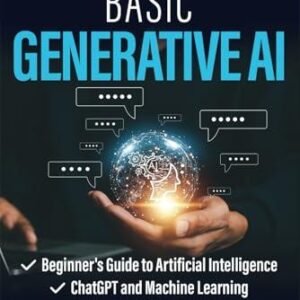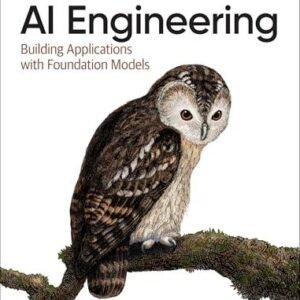In today’s rapidly evolving technological landscape, artificial intelligence (AI) is not just a buzzword; it is becoming an integral part of the educational ecosystem. For educators, embracing AI can lead to personalized learning experiences, enhanced student engagement, and more efficient administrative processes. However, the journey to successfully integrate AI into teaching practices is fraught with challenges. From understanding complex algorithms to addressing ethical concerns and overcoming resistance to change, the road can be daunting. In this article, we will explore the critical challenges educators face when training for AI implementation and share practical strategies to empower them in this transformative journey. Whether you are a seasoned educator or a novice, this guide will help you navigate the complexities of AI training, ensuring you and your students can harness the full potential of this revolutionary technology.
Table of Contents
- Understanding the Fundamentals of AI in Education
- Identifying Common Challenges Faced by Educators
- Strategies for Effective AI Training Implementation
- Creating a Supportive Learning Environment for AI Integration
- The Way Forward
Understanding the Fundamentals of AI in Education
As educational institutions increasingly integrate AI into their curricula, it becomes essential for educators to grasp the underlying principles that govern this technology. Understanding AI involves recognizing its ability to analyze data and generate insights, which can enhance learning experiences. Key aspects that educators should focus on include:
- Data Literacy: Educators must comprehend how data is collected, analyzed, and utilized in AI algorithms.
- Bias Awareness: Recognizing potential biases in AI systems is crucial to ensure fair and equitable educational outcomes.
- Ethical Considerations: Educators should be well-versed in the ethical implications of AI applications in the classroom.
Furthermore, challenges such as limited resources, varying technological proficiency among staff, and resistance to change can impede the successful integration of AI tools in education. To address these hurdles, institutions can implement structured training programs designed to strengthen educators’ skills. These programs can focus on the following:
| Training Focus | Description |
|---|---|
| Hands-on Workshops | Interactive sessions that allow educators to explore AI tools in real-time. |
| Peer-to-Peer Learning | Facilitated discussions among educators to share experiences and solutions. |
| Continuous Support | Ongoing access to resources and mentorship as educators navigate AI applications. |
Identifying Common Challenges Faced by Educators
As educators increasingly integrate artificial intelligence into their teaching practices, they encounter a variety of challenges that can hinder effective implementation. Understanding AI technology is a primary obstacle; many educators may feel overwhelmed by the sheer complexity and rapid evolution of AI tools. This uncertainty can lead to hesitance in adopting these technologies, resulting in missed opportunities to enhance learning experiences. Furthermore, educators must navigate the ethical considerations of AI use in the classroom, from data privacy to algorithmic bias, which can complicate the decision-making process.
Moreover, training and professional development often lag behind the technological advancements in AI. Many educators report a lack of structured training programs that adequately prepare them to utilize AI tools effectively. This gap in resources can lead to inconsistent application in classroom settings. Additionally, having access to technical support is essential; without it, educators may struggle to integrate AI-driven solutions seamlessly into their lesson plans. Addressing these issues requires a concerted effort from educational institutions to provide resources that meet the evolving demands of teaching in an AI-enhanced environment.
Strategies for Effective AI Training Implementation
To successfully implement AI training in educational environments, a multi-faceted approach is essential. First, stakeholder engagement plays a critical role in ensuring that everyone from administrators to educators understands the potential and limitations of AI technologies. This can be achieved through workshops, seminars, and discussions that emphasize collaborative learning. Establishing a culture of openness about AI helps to demystify the technology and encourages educators to share their insights and experiences, fostering a community of practice. Additionally, developing clear objectives aligned with curriculum goals ensures that AI applications are not only useful but also enhance the learning experience for students.
Furthermore, integrating ongoing support and resources is crucial for sustaining effective AI training. Offering professional development opportunities, including online courses and mentorship programs, allows educators to continuously adapt their skills to evolving technologies. Providing access to a library of case studies and success stories illustrates real-world applications of AI, making it easier for educators to envision its implementation. A structured feedback mechanism, such as a simple table summarizing the key benefits identified through training sessions, can help track progress and encourage adaptive learning. Below is an example of how such feedback could be organized:
| Benefit | Feedback Source |
|---|---|
| Enhanced student engagement | Teacher Surveys |
| Improved assessment accuracy | Administrator Reports |
| Streamlined lesson planning | Educator Interviews |
Creating a Supportive Learning Environment for AI Integration
Establishing a supportive learning environment is crucial when integrating AI into educational settings. For educators to successfully navigate the complexities of AI technologies, they need a framework that encourages exploration and experimentation. Schools should focus on fostering a culture where educators feel comfortable discussing their challenges and sharing their experiences with AI tools. Some effective strategies include:
- Collaborative Workshops: Organize regular workshops that bring together educators to explore AI tools and best practices.
- Mentorship Programs: Pair experienced educators with those new to AI to provide guidance and support.
- Feedback Mechanisms: Create channels for educators to share their thoughts and feedback on AI integration, promoting a sense of ownership and community.
Additionally, providing access to resources is essential for a successful integration. Schools can implement knowledge hubs where educators can find curated materials and tools for AI training. Consider using a simple table to identify key resources and their benefits:
| Resource | Benefits |
|---|---|
| Online AI Courses | Flexible learning at one’s own pace |
| Case Studies | Real-world examples of successful AI applications in education |
| AI Toolkits | Hands-on resources for implementing AI in classrooms |
By prioritizing collaboration and providing easily accessible resources, educational institutions can create a robust support system that empowers educators to embrace AI technology, enhancing the learning experience for both teachers and students.
The Way Forward
As we conclude our exploration into the complexities of AI training for educators, it’s clear that while the journey may be fraught with challenges, the rewards are undeniable. By embracing a mindset of continuous learning and collaboration, educators can harness the transformative power of artificial intelligence to enhance teaching methodologies and improve student outcomes.
Remember, the landscape of education is ever-evolving, and staying informed about emerging technologies is not just beneficial—it’s essential. As you navigate these challenges, connect with your peers, share insights, and seek resources that can support your professional development.
our goal as educators is to cultivate an environment where both teachers and students can thrive. By investing in your own understanding of AI, you pave the way for a more enriched and innovative educational experience. So, let’s take these steps together, armed with knowledge and a vision for the future of learning.
Thank you for joining us on this journey. We look forward to hearing how you are navigating the challenges of AI in your educational practices. Share your thoughts in the comments below, and let’s continue the conversation!





